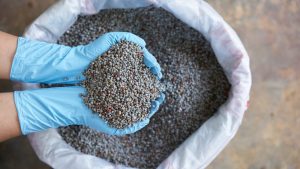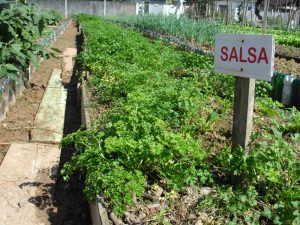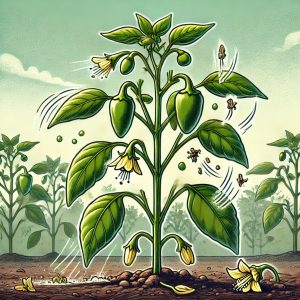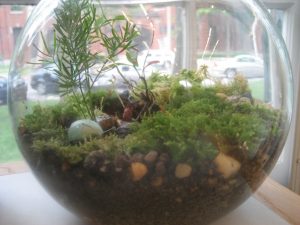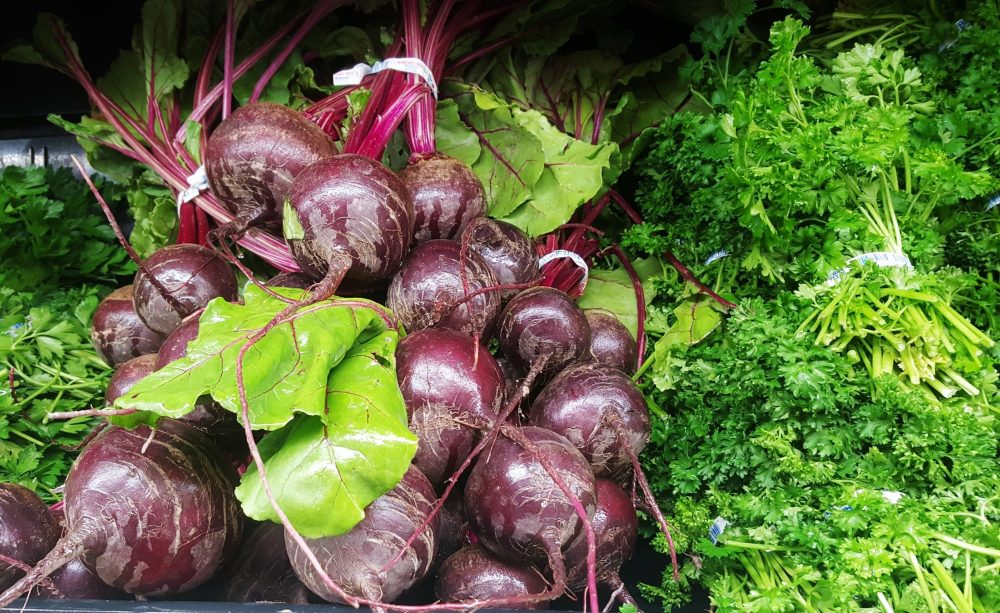
Gardening has always been rewarding, but not everyone has the luxury of expansive outdoor space. This is where the concept of growing beets in containers comes into play, offering a compact solution for urban gardeners and those with limited space. With their rich flavor and nutritional value, beets are surprisingly well-suited for container gardening. This guide aims to demystify the process, making it accessible and enjoyable for everyone.
Guide on Growing Beets in Containers
Contents
When growing beets in containers, there are three essential aspects to consider. Below is a discussion of those factors in cultivating your colorful produce.
Choosing the Right Containers
The right container accommodates the growth of beets and ensures their health and productivity. This section will delve into the key considerations for choosing the pots when growing beets in containers.
Understanding Container Size and Depth
Beets are root vegetables, requiring ample space for their roots to develop. A container with a depth of at least 12 inches is ideal. This depth provides enough room for the roots to grow without being cramped. In terms of width, a 12- to 18-inch container can comfortably accommodate a small group of beet plants. Larger or multiple pots may be necessary when growing beets in containers, and there is so much produce you plan on cultivating.
Material Matters
Containers come in various materials, each with its advantages and limitations. Here’s a quick rundown:
- Plastic Containers: Lightweight and cost-effective, plastic containers are a popular choice. They retain moisture well, which is beneficial when growing beets in containers. However, they may not be as durable as other materials and can deteriorate under prolonged sun exposure.
- Clay or Terracotta Pots: These are aesthetically pleasing and excellent at regulating soil temperature. However, they are heavier and tend to dry out faster, requiring more frequent watering.
- Wooden Containers: Wooden boxes or barrels can add a rustic charm to your garden. Ensure they are treated to resist rot and pests. Avoid using containers treated with harmful chemicals that can leech into the soil. Wood offer a decorative aspect to your garden when growing beets in containers.
- Fabric Pots: A relatively new option, fabric pots are breathable, promoting healthy root growth and preventing root circling. They are also lightweight and easy to move.
Drainage is Key
Regardless of the material, ensure your container has adequate drainage holes. Good drainage is crucial for preventing water-logged soil, which can lead to root rot and other issues. You can drill holes if your chosen container doesn’t have holes. Placing a layer of gravel or broken pottery pieces at the bottom of the container before adding soil can also help improve drainage.
Color Considerations
The color of your container can impact the soil temperature. Dark-colored containers absorb more heat, which can benefit cooler climates but might cause overheating in hot conditions. Light-colored containers reflect more sunlight, keeping the soil cooler, which can be advantageous in warmer climates. Considering the color can help you get the most out of growing beets in containers.
Container Placement
Once you have selected your containers, consider their placement. Growing beets in a container still require a good amount of sunlight for the vegetable to thrive. Ideally, they should receive at least six hours of direct sunlight daily. Placing containers where they can get ample sunlight is crucial for healthy growth. However, in very hot climates, some afternoon shade may be beneficial to prevent overheating.
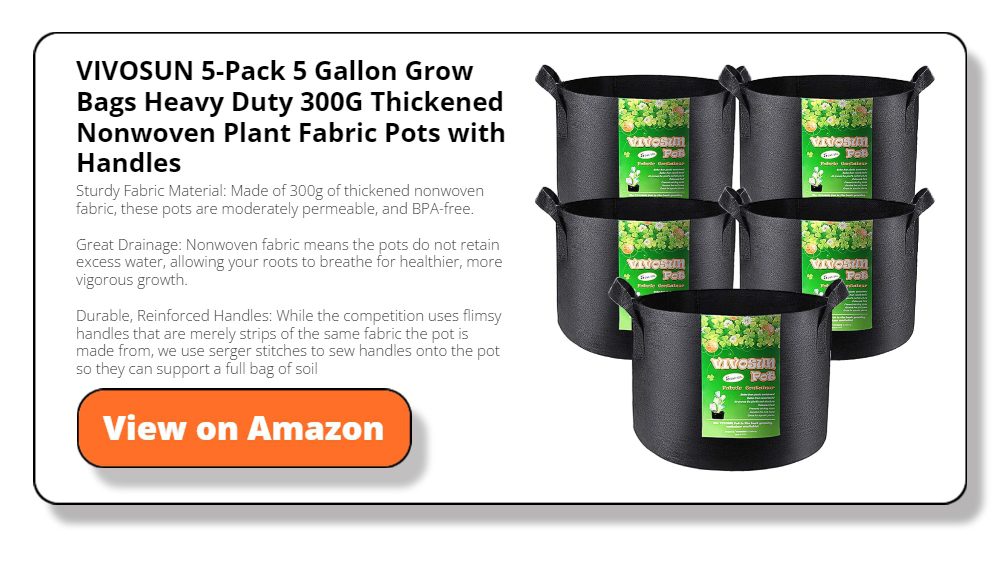
Selecting Beet Varieties for Container Gardening
When growing beets in containers, choosing the right variety is as crucial as selecting the appropriate container. Each beet variety has unique characteristics in size, taste, and growing requirements, making some more suitable for container gardening than others.
This detailed guide covers different beet varieties, helping you choose the perfect one for your container garden.
Understanding Beet Varieties
Beets come in a range of colors and flavors. When selecting a variety, consider the size of the beetroot, the flavor you prefer, and how the greens can be used. The right variety will help in growing beets in containers. Here’s a look at some popular beet varieties:
Detroit Dark Red: A classic choice for gardeners, this variety is known for its deep red color and round shape. The roots grow uniformly, making them an excellent option for containers. The flavor is sweet, earthy, and rich, making them a versatile choice for culinary uses.
Golden Beet: As the name suggests, these beets have a vibrant golden-yellow hue. They are slightly sweeter than red beets and have a more mellow flavor. Golden beets don’t bleed their color, which is an advantage for some dishes. Their unique color can add a decorative touch to your container garden.
Chioggia Beet: Also known as Candy Cane or Bullseye Beet, this variety is famous for its striking red and white concentric rings. It has a sweet, slightly peppery taste. Chioggia beets are a delight for the palate and a visual treat, making them a popular choice for gardeners and chefs alike.
Mini Baby Beets: These are ideal for container gardening because they are small. They can be harvested early and are perfect for single servings. Despite their size, they pack a flavorful punch with a sweet and tender profile.
White Albino Beet: A less common variety, these beets have a white color and a milder flavor than their red counterparts. They are less earthy and can be a great addition if you want to diversify the flavors in your beet harvest.
Cylindra Beet: Known for its elongated shape, these beets are larger than traditional round beets but can still be grown in deep containers. They have a smooth texture and a sweet flavor, making them excellent for slicing.
Flavor and Culinary Use
Each beet variety brings a unique flavor profile and culinary potential. For instance, the Detroit Dark Red and Golden Beet are great for roasting, which brings out their natural sweetness. Chioggia beets are excellent in salads, adding both flavor and visual appeal. Mini Baby Beets are perfect for pickling, while the White Albino and Cylindra beets can be used in various dishes, from salads to soups.
Growing Considerations for Containers
Consider the growing conditions and space requirements when selecting beet varieties for containers. Varieties like Mini Baby Beets or Detroit Dark Red are more compact and well-suited for limited space. It’s also important to consider the beet’s growing time and harvest size. Some varieties mature faster, which is ideal if you’re looking for a quick harvest.

Soil and Fertilization Requirements
Understanding and managing soil and fertilization is the key to growing beets in containers. Like many root vegetables, beets have specific needs regarding the type of soil and nutrients they require. This section will guide you through the best soil preparation and fertilization practices to ensure healthy growth and a bountiful harvest of beets in your container garden.
Ideal Soil Mix for Beets
The right soil mix is crucial for the development of beetroots. Here are the key characteristics of the ideal soil mix for growing beets in containers:
Loose and Well-Draining: Beets need loose soil to allow their roots to expand easily. A well-draining soil mix prevents waterlogging, which can lead to root rot. A mix of garden soil, compost, and a lightening agent like perlite or vermiculite is ideal.
Nutrient-Rich: Beets thrive in nutrient-rich soil. Incorporating compost or well-rotted manure into your soil mix can provide the necessary nutrients. The addition of compost not only feeds the vegetables but also improves soil structure and moisture retention when growing beets in containers.
Slightly Acidic to Neutral pH: Beets prefer a soil pH between 6.0 and 7.5. If unsure about your soil pH, a simple test can be conducted using a home testing kit. If needed, the pH can be adjusted with lime (to increase pH) or sulfur (to decrease pH). Setting the right soil for your garden can help when growing beets in containers.
Fertilization Schedule and Tips
While compost-rich soil provides a good start, additional fertilization can boost beet growth and yield. Here’s how to manage fertilization:
- Initial Fertilization: Mix a balanced, slow-release fertilizer into the soil when planting. A fertilizer with an equal ratio of nitrogen, phosphorus, and potassium (like a 10-10-10 blend) is a good choice.
- Ongoing Fertilization: Beets do not require heavy feeding, but a mid-season boost can help, especially for longer-growing varieties. Apply a low-nitrogen, high-potassium fertilizer to support root growth without promoting excessive leaf development.
- Organic Options: Fish emulsion or seaweed extract can be excellent choices for organic gardening. These provide a balanced range of nutrients and are gentle on the plants.
Watering and Fertilization Balance
Maintaining the right balance between watering and fertilization is essential. Over-fertilizing can lead to lush foliage at the expense of root development. Similarly, inconsistent watering can affect the uptake of nutrients and lead to problems like cracking or tough roots. Water your beets evenly, keeping the soil consistently moist but not waterlogged. Proper watering and fertilization is key to growing beets in containers.
Avoiding Overcrowding
In containers, space is limited, and overcrowding can affect soil nutrient availability. Thin your beet seedlings early to ensure each plant has enough room and access to nutrients. This also prevents competition for water and nutrients, leading to healthier, more uniform beets.
Monitoring Soil Health
Regularly check your soil’s condition. If the soil becomes compacted, gently loosen it without disturbing the roots. This aids in air circulation and nutrient absorption. Also, keep an eye on the color and texture of the soil, adjusting your watering and fertilization as needed.
The right soil mix and fertilization strategy are pivotal for container growth beets. A well-draining, nutrient-rich soil with a slightly acidic to neutral pH sets the stage for successful growth. Coupled with a thoughtful fertilization schedule and careful watering, these practices will ensure success when growing beets in containers.

Benefits of Growing Beets in Containers
Growing beets in containers is not just a practical solution for those with limited space, but it also offers a range of advantages that can enhance the gardening experience. This method allows gardeners to enjoy growing fresh produce regardless of their living situation. Here, we delve into the various benefits of growing beets in containers.
Space Efficiency
One of the primary advantages of container gardening is its space efficiency. This is particularly beneficial for urban dwellers or those with limited garden space.
- Flexibility in Placement: Containers can be placed on balconies, patios, or even windowsills, making it possible to grow beets in various settings.
- Maximizing Small Spaces: With containers, you can utilize vertical spaces by stacking pots or hanging baskets, allowing for more plants in a smaller area.
Enhanced Control Over Growing Conditions
Containers provide greater control over your beets’ growing environment.
- Soil Management: In containers, you have complete control over the soil quality and composition. This is especially useful if the natural ground soil is poor or unsuitable for gardening. Be mindful of the soil when growing beets in containers.
- Microclimate Management: Containers can be moved to take advantage of sunlight or shade, creating an optimal microclimate for beets. This mobility also allows for bringing plants indoors during extreme weather. Proper climate management helps when growing beets in containers.
Ease of Maintenance
Container gardening simplifies many of the tasks associated with traditional gardening.
- Weed Control: Weeds are less of an issue in containers, reducing the need for constant weeding. Proper control of the weed helps in growing beets in containers.
- Pest Management: Containers elevate the plants, which can help deter some ground pests. It’s also easier to spot and address pest issues in a contained environment.
- Watering and Fertilization: Focused watering and fertilization are more straightforward in containers, as you deal with a defined area and soil volume.
Improved Accessibility
Compact gardening makes growing beets in containers accessible to a wider range of people.
- Ergonomic Benefits: Containers can be raised to a comfortable height, reducing the need for bending or kneeling, which is ideal for individuals with mobility issues.
- Kid-Friendly Gardening: Containers are an excellent way for children to learn about gardening, providing an easily manageable and accessible workplace space.
Extended Growing Season
Growing beets in containers can extend the growing season in certain climates.
- Early Start: Containers warm up faster than ground soil in the spring, allowing for an earlier planting season.
- Flexibility in Seasonal Changes: Containers can be moved indoors or to sheltered areas to protect beets from early frosts or unexpected weather changes, prolonging the growing season.
Aesthetic and Emotional Benefits
Aside from the practical advantages, container gardening also offers aesthetic and emotional benefits.
- Visual Appeal: Containers can be decorative elements in your outdoor space, adding color and interest.
- Emotional Satisfaction: Nurturing plants and watching them grow provides emotional and mental health benefits, such as reducing stress and enhancing mood.
Environmental Impact
Growing beets in containers can have a positive environmental impact.
- Reduction in Carbon Footprint: By growing your beets, you reduce the need for store-bought varieties that often involve transportation and packaging.
- Sustainable Practices: Container gardening encourages using recycled materials and composting, promoting a more sustainable lifestyle.

Planting and Care Instructions
Successfully growing beets in containers involves more than just planting seeds. It requires understanding the specific needs of beets at each stage of their growth. This section will provide detailed guidance on planting and caring for your beets to ensure a thriving harvest.
We cover everything from the initial planting steps to the ongoing care required as your beets grow.
Preparing for Planting
Selecting the right time to plant beets is vital. Ideally, plant beets in early spring or late summer. Beets prefer cooler temperatures and can tolerate light frost. Before planting, choose a container with adequate depth and drainage.
A depth of at least 12 inches is ideal for root development. Prepare your soil mix, aiming for a balance of garden soil, compost, and a lightening agent like perlite. This creates a nutrient-rich, well-draining environment essential for beet growth.
Ensure the soil is loose and not compacted, as beets need room to expand their roots. If using previously used containers, clean them thoroughly to prevent disease. You can plant your beet seeds once your containers and soil are ready.
Planting Your Beet Seeds
To plant beet seeds in containers, sprinkle the seeds lightly over the soil surface. Aim for a spacing of about 1 inch apart. Cover the seeds with a thin layer of soil, no more than 1/2 inch deep.
Press down the soil to ensure good seed contact, but avoid compacting it. Water the soil lightly to moisten it without causing the seeds to shift. Label your containers if planting multiple varieties. Beets generally germinate within 7 to 14 days.
During germination, keep the soil consistently moist but not waterlogged. The seeds can be sown directly into the containers and don’t require initial indoor starting. This direct sowing method reduces transplant shock and promotes healthier root development.
Watering Requirements
Beets require consistent moisture to grow well, especially during seed germination and root development. Water your beets when the top inch of soil feels dry. Avoid over-watering, as this can lead to root rot.
The watering frequency will depend on weather conditions and the type of container used. Plastic and glazed containers retain moisture longer than porous materials like terracotta. Beets may need more frequent watering in hotter climates to prevent the soil from drying out. Conversely, in cooler, cloudier conditions, they may need less.
A watering can with a rose attachment is ideal for gentle watering that doesn’t disturb the soil or seeds. Regular soil moisture monitoring is key, and adjusting your watering routine as the beets grow and weather conditions change will help ensure healthy, hydrated plants.
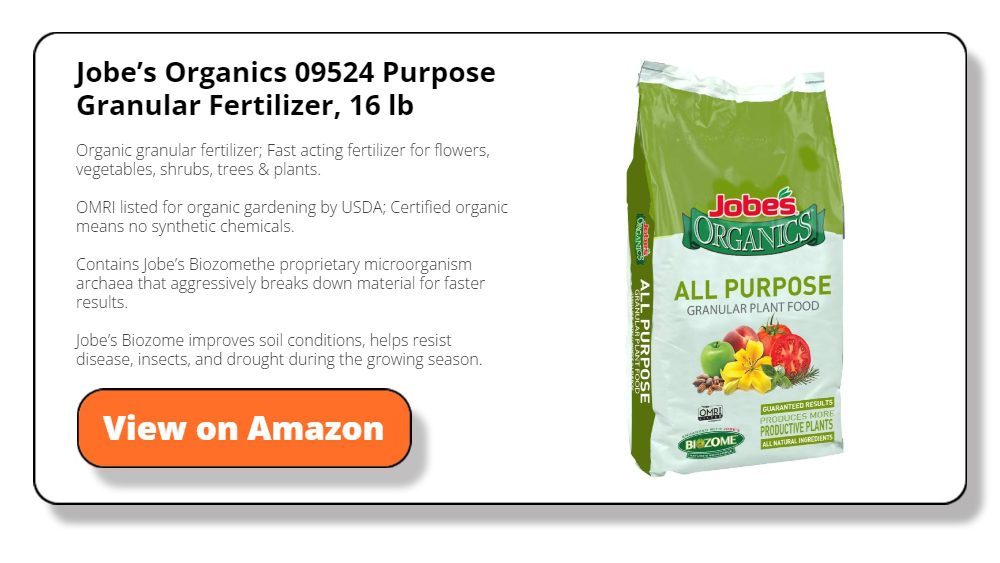
Sunlight and Temperature Needs
Beets thrive in conditions with ample sunlight and moderate temperatures. They require about 6 to 8 hours of direct sunlight daily for optimal growth. If you’re growing beets in containers within a region with intense sunlight, providing some afternoon shade can prevent overheating.
As for temperature, beets grow best in cooler weather, ideally between 50°F and 65°F. They can tolerate light frost, but prolonged exposure to temperatures below freezing can damage the plants. In hot climates, it’s important to avoid heat stress.
You can move containers to a shaded area or use a light cloth to protect the plants during the hottest day. Monitoring and adjusting the placement of your containers to ensure the right balance of sun and shade will support healthy beet growth.
Thinning Seedlings
Thinning is a crucial step with growing beets in containers, especially where space is limited. Once your beet seedlings are about 2 to 3 inches tall, thin them to about 3 to 4 inches apart. This process involves carefully removing the smaller or weaker seedlings, allowing the remaining ones more space to grow.
Thinning ensures that each beet has enough room for root expansion, leading to larger and healthier beets. Be gentle when thinning to avoid disturbing the roots of the remaining plants.
The thinned seedlings can be used in salads, as they are edible and nutritious. Regular thinning checks are recommended, as beets can produce more than one seedling per seed.
Nutrient Management and Fertilization
Proper fertilization is important for the growth of beets. Start with a balanced, slow-release fertilizer mixed into the soil at planting time. A formula with equal parts nitrogen, phosphorus, and potassium (such as a 10-10-10 blend) is ideal.
About midway through the growing season, consider a second application of fertilizer to support continued growth, especially for varieties that take longer to mature. At this stage, use a fertilizer with lower nitrogen content to encourage root rather than foliage growth.
Organic options like fish emulsion or compost tea are also beneficial. Beets are not heavy feeders, so avoid over-fertilizing, leading to lush foliage at the expense of root development.
Monitor your plants for signs of nutrient deficiency, such as yellowing leaves or stunted growth, and adjust your fertilization accordingly. Regular, balanced feeding and the right soil mix will give your beets the nutrients they need to thrive in containers.
Pest and Disease Control
Managing pests and diseases is crucial for maintaining healthy beet plants. Container-grown beets can be less susceptible to some common ground pests, but vigilance is still needed.
Watch out for leaf miners, aphids, and flea beetles. These pests can be controlled by regular inspection and, if necessary, using organic insecticides like neem oil or insecticidal soap. Physical barriers, such as floating row covers, can also be effective.
Good air circulation and proper watering practices prevent fungal diseases like leaf spot and root rot. Avoid overcrowding and overwatering. If a plant becomes infected, remove and dispose of it promptly to prevent the spread of disease.
Embrace organic pest and disease control methods. Introduce beneficial insects, like ladybugs, to handle aphid problems naturally. Use compost tea or baking soda sprays to tackle mild fungal issues.
Regular monitoring and prompt action can keep your beet plants healthy and productive.
Monitoring Growth and Health
Observing your beets as they grow is essential for ensuring their health and catching any issues early.
Beets typically take between 50 to 70 days to reach maturity. Keep track of their growth rate and regularly inspect any signs of stunted growth or discoloration, which can indicate problems.
The leaves of the beet plant can be a great indicator of overall health. They should be vibrant and green. Yellowing or wilting leaves may suggest nutritional deficiencies or watering issues.
As beets grow, part of the root may protrude above the soil. This is normal and can indicate when they are nearing harvest size. However, swelling roots should not be excessively exposed, which can lead to hardening.
Based on your observations, adjust your care routine. This might include changing watering frequency, modifying fertilization, or repositioning containers for better sunlight exposure.
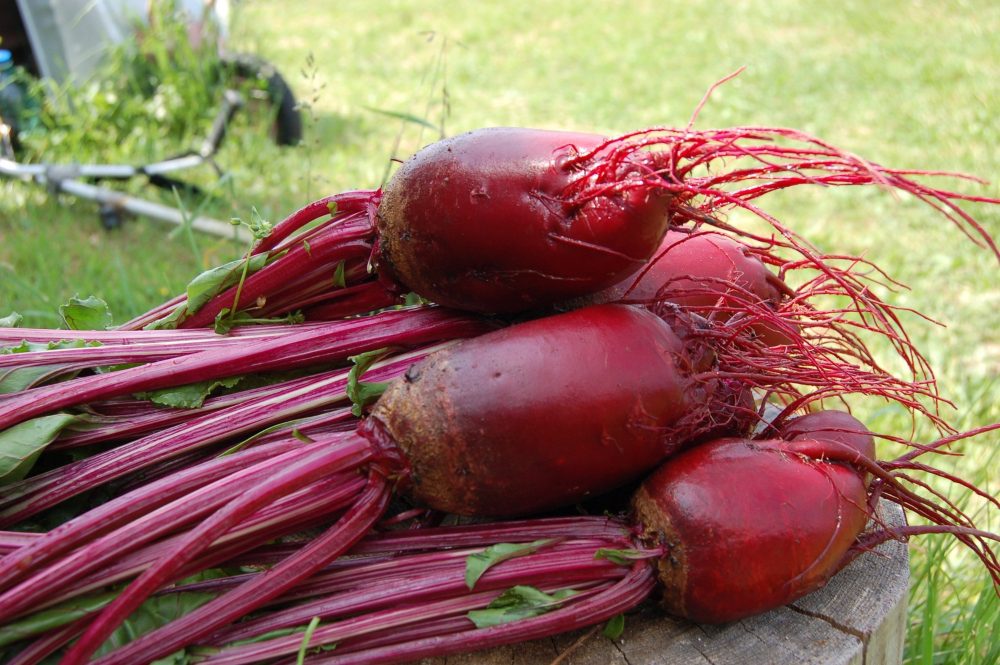
Harvesting and Storage Tips
Harvesting beets at the right time and storing them properly ensures you can enjoy your homegrown produce for longer. Here are some tips to guide you through this final stage of your beet-growing journey.
When to Harvest
- Size Indicator: Harvest beets when they are about the size of a golf ball to a tennis ball, typically 1.5 to 3 inches in diameter.
- Age Check: Most beet varieties are ready for harvest 50 to 70 days after planting.
- Leaf Guide: Look for beet leaves that are about 6 inches tall to indicate that the roots are nearing maturity.
How to Harvest
- Gentle Approach: Carefully loosen the soil around the beet to avoid damaging the root.
- Pulling Technique: Grasp the beetgreens near the base and gently pull while supporting the soil to ease out the beetroot.
- Leaf Removal: Trim the tops off, leaving about an inch of stem to prevent the beets from bleeding.
Storing Fresh Beets
- Refrigeration: Store beets in the refrigerator. They can last for several weeks to a couple of months if kept in a plastic bag with some holes for airflow.
- Root Cellar Storage: Beets can be stored for several months in a root cellar or similar cool, humid environment.
- Leave Unwashed: Wait to wash the beets until right before you use them to prevent moisture from shortening their shelf life.
Preparing Beets for Longer Storage
- Blanching and Freezing: Blanch beets are boiled briefly and then cooled in ice water. Afterward, peel, slice, or dice, and freeze them in airtight containers or freezer bags.
- Canning: Beets can be canned using a pressure canner, preserving them for up to a year.
Storing Beet Greens
- Eat Fresh: Beet greens are best eaten fresh but can be stored in the refrigerator for a few days, wrapped in a damp paper towel.
- Freezing Greens: You can also blanch and freeze the greens for later use.
Using Stored Beets
- Reviving Beets: If stored beets become soft, they can often be revived by soaking in cold water for a few hours.
- Check Regularly: Inspect stored beets regularly and remove any that show signs of spoilage to prevent them from spreading to others.
Tips for Longevity
- Ideal Conditions: Beets store best in dark, cool, and humid conditions. Avoid storing them near apples or bananas, as these fruits emit ethylene gas that can cause the beets to spoil faster.
- Space Out Harvest: Don’t harvest all your beets at once. Stagger the harvest to extend the freshness of your produce.
FAQ on Growing Beets in Containers
Can I grow beets in containers indoors?
Beets can be grown indoors, provided they receive sufficient sunlight. Place them near a sunny window or use grow lights to ensure they get at least 6 to 8 hours of light daily.
How often should I water beets in containers?
Water your container-grown beets when the top inch of soil feels dry. This could be every few days, depending on weather conditions and the type of container. Ensure consistent moisture without waterlogging the soil.
Do beets grown in containers require special fertilizer?
Beets aren’t particularly heavy feeders but benefit from a balanced, slow-release fertilizer at planting time. Midway through the season, a low-nitrogen, high-potassium fertilizer can be applied to support root growth.
What are the common pests that affect beets in containers?
Common pests include leaf miners, aphids, and flea beetles. Regular inspection and organic insecticides like neem oil can help control these pests. Physical barriers like floating row covers are also effective.
Conclusion
Following this guide ensures a successful harvest when growing beets in containers. With the right container, soil, and care, you can cultivate various beet varieties, each offering unique flavors and colors. The joy of harvesting your beets and the benefits of space efficiency, control over growing conditions, and ease of maintenance make this a highly satisfying endeavor.

